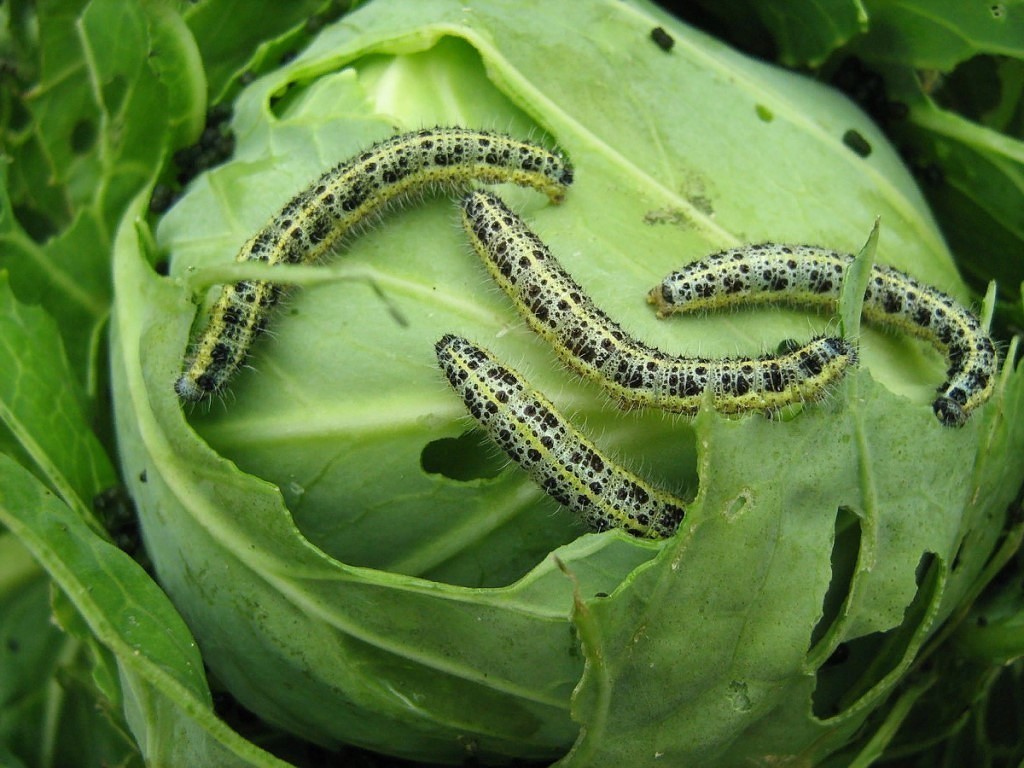
Butterflies and their larvae (caterpillars) - attracts the juice of plants of cruciferous crops, in particular cabbage. Cabbage eggs lay eggs, from which voracious larvae appear that can eat a whole head of cabbage in a few days. The fight against harmful living creatures can be done using folk remedies aimed at destroying egg clutches and reducing the caterpillar population.
Content
A few words about the life of the tracks
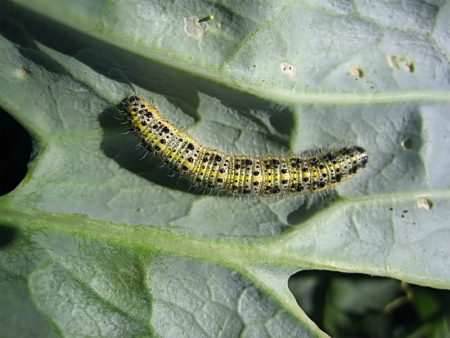
A caterpillar is part of the butterfly’s life cycle. There are two types of butterflies that attack cabbage - a whitetail (it is also called a cabbage) and a scoop. Their caterpillar, having matured, turns into a winged very attractive insect, but for now it is a very voracious creature that gnaws numerous passages in cabbage leaves, leaving traces of life activity behind it. Where the track runs, rotting processes begin. As a result, the fruit deteriorates from the inside, covered with black fungal sprouts. Cabbage spoiled by caterpillars can no longer be eaten, as toxins accumulate in its leaves.
Cabbage and scoop laying eggs on the back of the lowest cabbage leaves. During the summer, they can produce up to four generations (up to 300 pieces!) Of small caterpillars of yellowish-green (whitewash) or greenish-brown (scoops) color. The second generation, which appears in the middle of summer, at a time when the heads of cabbage begin to grow, poses a great threat.
Cabbage butterflies find "their" plant by smell. You can protect cabbage from the appearance of the pest with the help of "odorous" sprayings and herbs, which will confuse the track and direct the butterflies in the other direction.
Track Control Methods
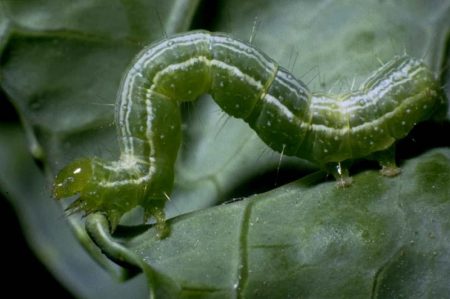
There are various ways to get rid of harmful insects. With strong propagation of caterpillars, biological or chemical insecticides are used. However, with a small population of the pest, it is quite simple to eliminate it with folk remedies.
The most effective recipes
Soapy ash solution. Grated soap (200 grams) is dissolved in a bucket of water (10 liters). You can use liquid dishwashing detergent or tar shampoo. A glass of ash is added to the soap mixture. Ready solution is abundantly watered cabbage. After processing, the foliage will be covered with a thin slippery film, on which the caterpillars will not be able to move. This solution will scare away butterflies with a sharp unpleasant odor.
Infusion of onion husks. 250-300 grams of onion husks are poured with boiling water and insisted for a couple of days. Then the concentrate is diluted with two liters of cold water, 50 milliliters of soap are added. The resulting composition is sprayed over the landings. Onion peel has a very pronounced onion aroma, which many pests do not tolerate.
Tobacco infusion. Parasites hate the smell of tobacco or shag, so you can get rid of harmful animals by preparing an infusion of these components. For a natural insecticide, take 40 grams of tobacco (shag) dust, fill it with water and let it brew for 2-3 days. Then the solution is filtered, mixed with two liters of water, liquid soap is added (for better adhesion). Plants are treated with the finished product, not only cabbage, but also those that grow in the neighborhood.

You can also cook tobacco broth. To do this, 40 grams of tobacco is boiled in two liters of water for 2 hours.Once the mixture has cooled, it can be used to irrigate the beds.
Black pepper remedy. 30 grams of peppercorns are poured with water and simmer for 10-15 minutes. Then the broth is left to infuse for a couple of days. Before processing, a little grated soap is added to the solution.
Valerian solution. The pharmacy valerian (20 drops) is diluted in a liter of cold water - the insecticide is ready! Processing cabbage plantings is carried out immediately after cooking.
Hot pepper broth. 5-7 pods of hot pepper finely chopped and filled with water. The mixture is boiled for 30 minutes. Then the broth should be infused until completely cooled. Ready broth watered cabbage planting.
Infusions and decoctions of herbs
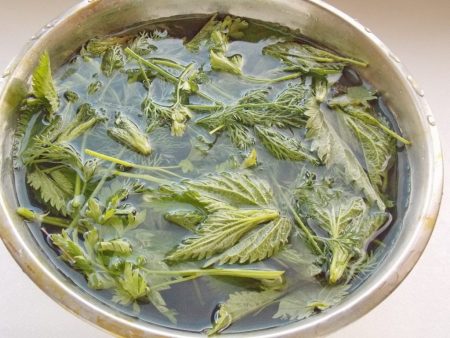
Decoction of delphinium. With ten liters of water, 100-200 grams of the dried parts of the delphinium are poured (you can take both roots and the ground part) and incubated for 2-3 days in a dark room. The infusion is boiled for 1.5-2 hours, then cooled, filtered. With a ready-made solution, cabbage is sprayed as soon as the first larvae are found on it.
Tincture of burdock. This plant contains substances poisonous to harmful insects, which affect their central nervous system. The leaves of the burdock are finely chopped, poured with warm water and allowed to infuse for 5-7 days until the mixture ferments. Then the concentrate is filtered and generously watered the soil under the bushes and the heads themselves are sprayed. Caterpillars, having tasted a sweetish liquid, die a painful death.
Infusion of burdock and garlic. Burdock or garlic tinctures will help protect the roots from being eaten by soil pests. For a burdock-based insecticide, 200-400 grams of leaves are taken, ground and poured with water. After 3-4 days, the rescue tool will be ready for use. To prepare the garlic tincture you will need 10 heads of fresh garlic, which are crushed to a mushy state and poured with 5 liters of water. The mixture is infused for a couple of days. Then it is filtered and watered the soil at the base of the bushes, as well as the heads of cabbage.
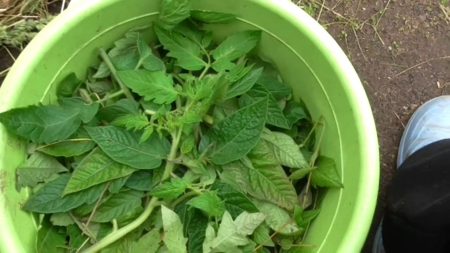
Tomato Tops. Plant residues from tomatoes are poured with five liters of boiling water and left to infuse for one day. Then the mixture is boiled for 20-30 minutes, and then filtered and diluted with water in a ratio of 1: 2. The solution is irrigated cabbage bed. For the best effect, tar soap is added to the product.
Infusion of potato tops. The collected plant remains of a potato bush (600-700 grams) are crushed, and then insisted for 2-3 days in a bucket of water. Then the infusion is filtered, grated soap is added and sprayed with a planting mixture.
A solution of tansy. You can collect tansy inflorescences, grind them and add road dust. Ready substrate dusted cabbage. To prepare the infusion, finely chopped tansy (200-300 grams), add 5 liters of water. The solution can be used immediately or let it brew for several hours - so the effect will be stronger.
Camomile tea. 200 grams of wild chamomile flowers are crushed and infused for 20 hours in a liter of water. Then the mixture is filtered, a little liquid soap is added. The tool is sprayed onto plants that attacked the caterpillars.
All infusions and decoctions are absolutely harmless to plants, and therefore they can be processed regularly throughout the summer season. As a prophylaxis, useful spraying is performed once every two weeks, starting immediately after transplanting seedlings into the ground.
Alternative Track Control Methods
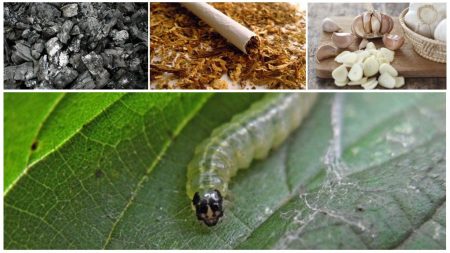
A mixture of flour and soda. These two substances are harmful to caterpillars if they enter their bodies. Gardeners mix flour and soda, adding pollen from cruciferous plants (to attract the attention of pests). Cabbage leaves are strewn with the finished mixture, paying special attention to the places of accumulation of insects. Caterpillars, having tasted such "food", will soon die.
Eggshell. Many summer residents use the most ordinary egg shells to scare away butterflies from a site. It is hung on pegs in various places in the garden. Butterflies fly around the place where the shell is located. The fact is that insects think that this territory already belongs to other comrades-in-arms, therefore they fly away in search of “not conquered” garden plantations.
Acetic solution. An effective remedy against caterpillars is prepared on the basis of 70% vinegar essence. A bucket of water will need a tablespoon of vinegar.
You can prepare a solution of table salt (2 tablespoons), ammonia (50 milliliters).
The use of tomato stepsons. The easiest, but very effective way - to put on heads of cabbage, torn from tomato bushes stepsons. They emit a strong odor unpleasant for insects, which will interrupt the cabbage smell, and the butterfly will fly by. It is important that the tomato tops always remain fresh, and therefore, as they dry, stepsons are replaced with new ones.
Chicken droppings. 200 grams of chicken droppings are poured into a bucket of water and allowed to brew. A day later, the infusion is ready for use.
Lime.Dry powder is scattered in the aisle of the cabbage beds. Lime can be replaced with mustard powder.
Biological methods
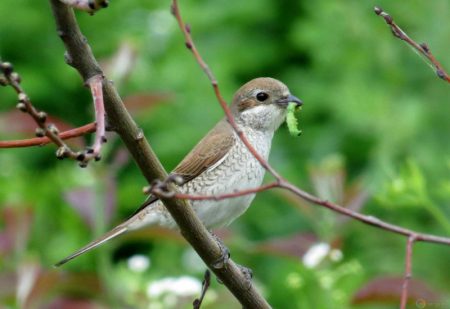
Successfully exterminating butterflies and caterpillars their natural enemies - birds and larger predatory insects.
Useful insects are not intended to completely destroy pests, but to control their numbers.
Species of birds most useful in pest control:
- starling;
- tit;
- woodpecker;
- swallow;
- swift;
- flytrap;
- redstart;
- rook.
Amphibians:
- frog and toad.
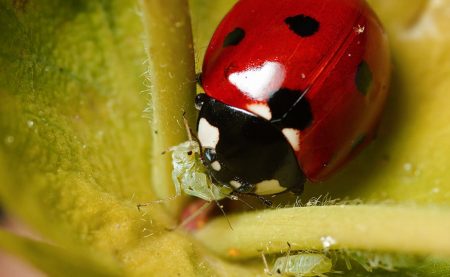
Predatory insects:
- rider beetle;
- grub;
- ladybug;
- spiders
- phytoseyulus (predatory spider);
- tahin, hedgehog;
- Fire Beetle;
- mantis;
- bug;
- wasp;
- ground beetle.
You can attract birds by constructing birdhouses and feeders on garden trees. You can sprinkle cabbage with syrup or sugar water - a sweet smell will lure wasps and ants, who, seeing small insects, will rush to feast on them.
Predators can be lured by herbs (aster, coriander, fennel, yarrow, dill, and many others). Predators will come to their sweet smell and quickly catch harmful caterpillars.
Give chickens the opportunity to freely walk around the garden. They feed on caterpillars directly from plants, so you no longer have to collect insects by hand.
Helper Plants

Many herbs repel caterpillars (and other pests of the garden) with their astringent smell. Insects cannot be near such plants, and quickly retire from the "foul-smelling" site. To grassy enemies of caterpillars include:
- green crops (mint, lemon balm, parsley, basil, onion, garlic);
- medicinal herbs (tansy, basil, sage);
- flowers (marigolds, calendula);
- weed grass (nettle).
Flowers are usually planted around the perimeter of the garden plot, surrounding the protective ring with cabbage and other crops. Garlic is placed along the cabbage beds so that the pungent odor drowns out the cabbage “flavor”. And ordinary freshly cut nettles can perform several useful functions at once: scare away the caterpillars with a pungent odor, protect the earth from moisture evaporation (as mulch), and fertilize the earth with nutrients (when rotting).
Prevention
It is quite possible to avoid the appearance of caterpillars on the site. To do this, you must:
- Cover the beds with a net, thin tulle or spanbond, which will not allow butterflies laying in the leaves of larvae to the cabbage.
- When a weed appears, remove it immediately, as weed grass attracts butterflies.
- Place useful plants next to the cabbage bed.
- Regularly inspect the underside of cabbage leaves, removing egg clutches on time.
- Promptly carry out preventive spraying with insecticides.
- Strengthen the immunity of plants with beneficial top dressing.
- Attract natural enemies of caterpillars to the site (birds, insects).
- To mulch the ground with odorous herbs and needles - butterflies will not even fly close to such a site.
- In the autumn, after harvesting, completely clear the area of plant debris and dig the soil deep - this will save pests hidden in the ground.
Combine feeding and destruction of parasitic living creatures. Boric acid, chicken droppings and herbal tinctures will enrich the earth and scare away insects.
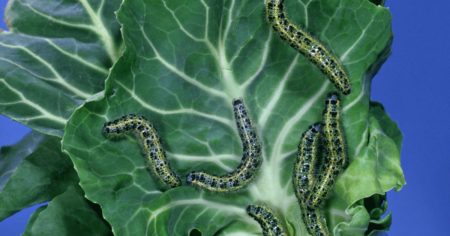
Reviews
Marina
Sprinkling cabbage with wood ash helps a lot from various pests. Still disorienting cabbage tops from tomatoes. We cover the beds with stepsons of tomato, potato tops, arrows of onions and garlic. Butterflies and caterpillars do not accept the smell of these plants. I also noticed that after irrigation with cold water the caterpillars become smaller.
Lyudmila
As a preventive measure, I always use dry citrus peels. In the evening or early morning, I spray the cabbage with soapy water, and then mix the crushed peel from oranges or lemon with ash and sprinkle the heads of cabbage. The earth can also be strewn with. Butterflies do not like the aroma from citrus, and then the egg laying is transferred to another place.
Conclusion
Folk remedies against caterpillars do not contain concentragens, and therefore are absolutely harmless to plants and humans. It is safe to eat cabbage grown without using chemicals. At first glance, recipes containing very simple, natural ingredients are ineffective. However, as the experience of millions of gardeners shows, the use of folk methods for the destruction of caterpillars in most cases justifies the risks.

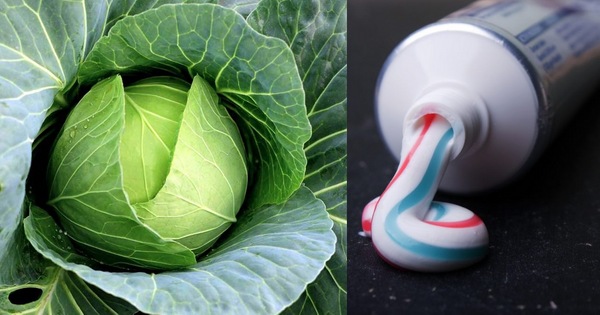
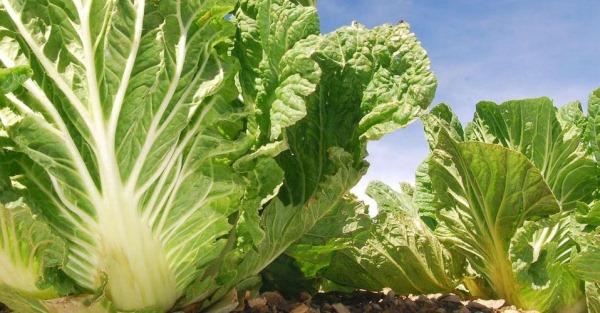
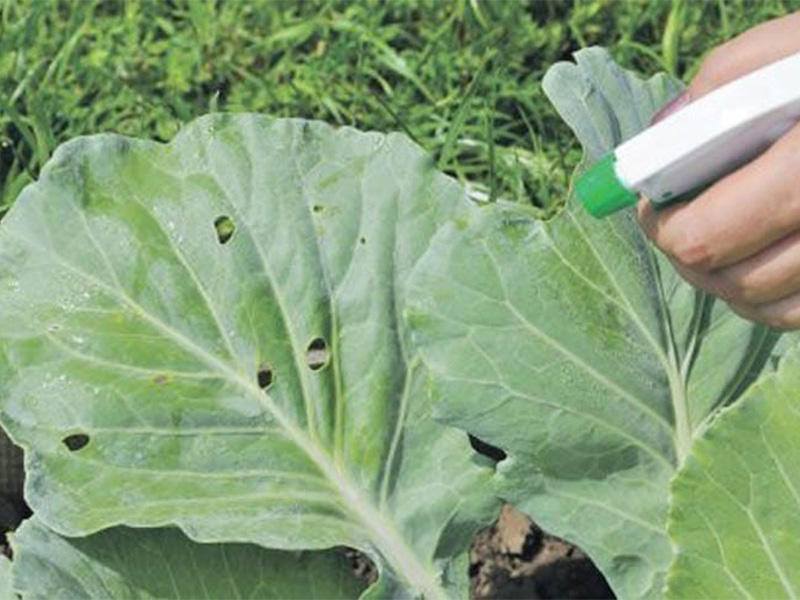
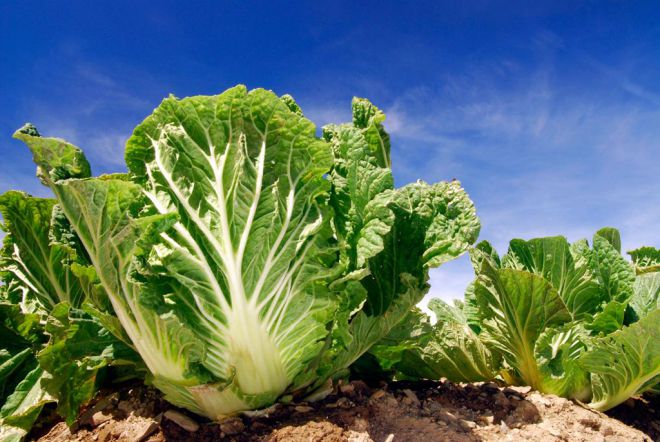 How to grow Chinese cabbage on your site?
How to grow Chinese cabbage on your site?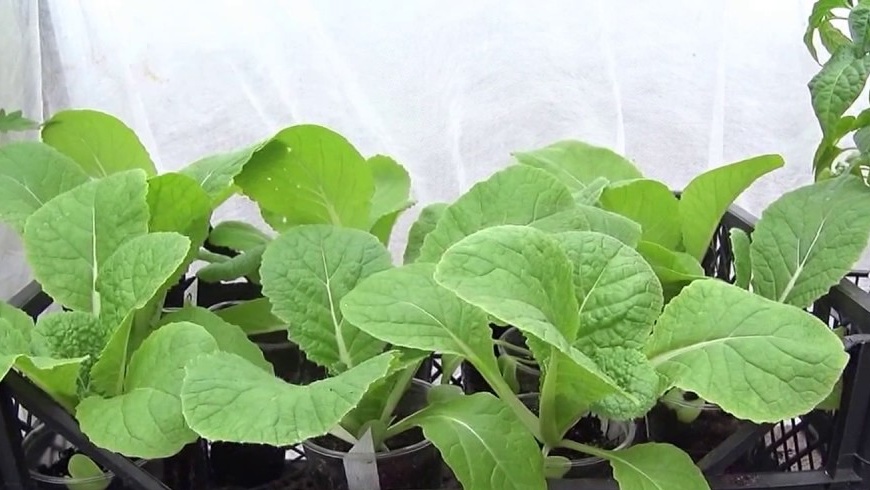 When to plant Chinese cabbage on seedlings in 2024
When to plant Chinese cabbage on seedlings in 2024 When to sow cabbage for seedlings in 2019 on the moon
When to sow cabbage for seedlings in 2019 on the moon Cauliflower: how to grow large snow-white inflorescences
Cauliflower: how to grow large snow-white inflorescences